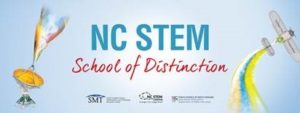

Gr eene County Schools (GCS) in North Carolina has a long history of developing opportunities to increase student engagement and provide extended learning opportunities. After-school programs and investments, supported by the Collaborative Project, created a culture of greater student access to academic enrichment in Greene County. GCS began focusing on STEM education in 2010 with the development of a preK-12 strategic district science plan. That same year, GCS was selected as a participant in the i3 LASER Program. The i3 LASER Program is a five-year research study to assess the impact of the Leadership Assistance in Systemic Science Education Reform (LASER) Model on student achievement in science among 75,000 urban and rural first- through eighth-grade students in North Carolina, Houston (Texas), and northern New Mexico. To date, participation in this program has provided a research-based curriculum, materials support, and differentiated professional development for teaching and learning.
eene County Schools (GCS) in North Carolina has a long history of developing opportunities to increase student engagement and provide extended learning opportunities. After-school programs and investments, supported by the Collaborative Project, created a culture of greater student access to academic enrichment in Greene County. GCS began focusing on STEM education in 2010 with the development of a preK-12 strategic district science plan. That same year, GCS was selected as a participant in the i3 LASER Program. The i3 LASER Program is a five-year research study to assess the impact of the Leadership Assistance in Systemic Science Education Reform (LASER) Model on student achievement in science among 75,000 urban and rural first- through eighth-grade students in North Carolina, Houston (Texas), and northern New Mexico. To date, participation in this program has provided a research-based curriculum, materials support, and differentiated professional development for teaching and learning.
In 2012, GCS partnered with the North Carolina Virtual Public School to develop and deliver three blended STEM courses. Greene Central High School (GCHS) served as a pilot site for these courses, targeting “STEM at-risk students.” The pilot began with 40 students taking three courses. In 2015, more than 200 students were enrolled in 21 high school STEM courses, most of which were advanced/honors-level courses. More STEM courses are being added for 2016-2017. GCHS has been recognized as a Distinguished STEM School by the North Carolina Science, Mathematics and Technology (SMT) Center and as a STEM Model School by the North Carolina Board of Education. The GCS STEM Academy continues to serve our most ethnically diverse students traditionally underrepresented in STEM (55 percent Hispanic or Black and 50 percent female). GCS is a member of the NC STEM Ecosystem that provides the architecture for cross-sector learning, offering all young people access to STEM-rich learning environments so they can develop important skills and engagement in science, technology, engineering and math throughout preK-16.
STEM courses were made available to Greene County Middle School (GCMS) students in 2015-2016. More than 600 students preregistered for these courses. STEM education is the vehicle for transforming teaching and learning in GCS. Data indicates that participation in GCS STEM courses has a positive academic and behavior impact on students. Student interest in STEM continues to grow. Through partnerships with NC STEM East, NC SMT Center, Duke Energy, and Kenan Fellows, a STEM Lab was installed at GCMS. The STEM Lab provides sixth-, seventh- and eighth-grade students further exposure to inquiry-based learning and connections to STEM career fields. The GCMS STEM Lab serves as a showcase-learning environment and is toured by partner organizations, businesses, higher education representatives, commissioners and other schools that will be preparing to scale up STEM labs in the next couple of years through partnerships with STEM East. The GCMS STEM Lab will be a feature of the annual GCS STEM Expo and used by middle school students participating in the robotics club and Science Olympiad teams during and after school.
In addition to engaging courses, students are drawn to participate in the STEM Society. The STEM Society was established to provide opportunities beyond the classroom for students in the STEM program. The organization provides students the chance to gain practical experience in designing and programming robots, community outreach, STEM awareness and leadership development. The Society currently consists of 200 members at GCHS and 290 members at GCMS. The NC SMT Center has provided ongoing support to the STEM Society, which provides students opportunities to practice the critical skills they develop in STEM courses. We believe the STEM Society is a successful student engagement model that can be replicated in other schools.
GCS’ STEM program strives to help students discover their potential for success in STEM careers by supporting their exploration of STEM-related fields, developing multi-cultural relationships within teams to collaboratively solve problems by encouraging the development of 21st-century skills, providing a curriculum with valuable life lessons, and by supporting their postsecondary education to solve tomorrow’s global issues. This has been our journey in transforming our school district.